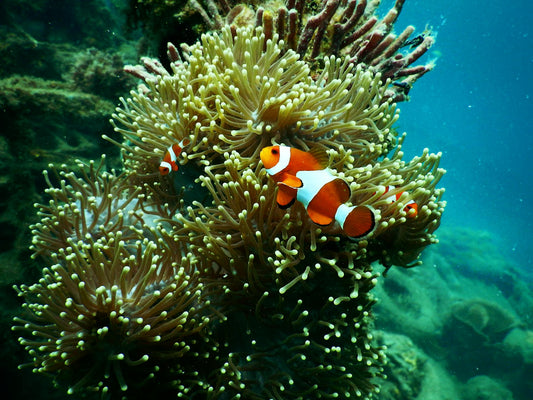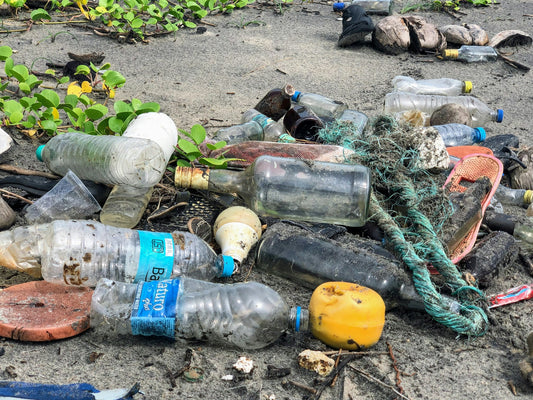Share
Transforming Plastics: The Path to a Circular Economy
Did you know that the world produces over 450 million tonnes of plastic each year? This staggering figure is a stark reminder of the plastic pollution crisis we face today. As we grapple with the environmental impact of plastic waste, the concept of a circular economy emerges as a beacon of hope. But what does it mean to transform plastics within this framework?
Why Understanding Plastic Pollution Matters
Plastic pollution is not just an eyesore; it poses significant threats to our ecosystems and health. According to the OECD, plastic waste is projected to triple by 2060 if current trends continue. This alarming trend highlights the urgency of addressing plastic pollution, which affects marine life, wildlife, and even human health through the food chain.
Every year, millions of tons of plastic end up in our oceans, leading to devastating consequences for marine ecosystems. The impact is felt not only by wildlife but also by communities that rely on these ecosystems for their livelihoods. Understanding the scale and implications of plastic pollution is the first step toward meaningful change.
The Circular Economy: A Solution to Plastic Waste
The circular economy is a transformative approach that seeks to redefine our relationship with materials. It emphasizes the importance of keeping products and materials in use for as long as possible, thereby minimizing waste. As defined by the Ellen MacArthur Foundation, a circular economy is a system where materials never become waste, and nature is regenerated.
By adopting circular principles, we can mitigate the impact of plastic waste. This involves designing products for longevity, encouraging reuse, and implementing effective recycling systems. The shift from a linear economy—where products are made, used, and disposed of—to a circular model is essential for sustainable development.
Successful Case Studies in Circular Economy Practices
Several companies and countries are leading the way in implementing circular economy practices. For instance, Unilever has committed to making all of its plastic packaging recyclable, reusable, or compostable by 2025. This initiative not only reduces plastic waste but also sets a standard for the industry.
On a larger scale, Sweden has become a model for waste management, with over 99% of its waste being recycled or used for energy. This success story demonstrates how effective policies and public engagement can drive significant change. The UNEP highlights such global strategies as essential for addressing plastic pollution.
Practical Steps to Embrace a Circular Economy
Individuals and businesses can take actionable steps to reduce plastic use and waste. Here are some practical tips:
- Reduce Single-Use Plastics: Opt for reusable bags, bottles, and containers.
- Support Sustainable Brands: Choose products from companies committed to circular practices.
- Educate Yourself and Others: Share knowledge about the importance of reducing plastic waste.
- Participate in Local Clean-Up Efforts: Engage with your community to clean up plastic waste.
Additionally, businesses can assess their current practices using a checklist to identify areas for improvement. This proactive approach not only benefits the environment but can also enhance brand reputation and customer loyalty.
Innovations in Plastic Recycling and Alternatives
Innovation plays a crucial role in the transition to a circular economy. New technologies and materials are emerging that support sustainable practices. For example, biodegradable plastics made from renewable resources, such as corn or sugarcane, offer a promising alternative to traditional plastics. These materials can help reduce greenhouse gas emissions and lessen the environmental impact of plastic waste.
Moreover, advancements in chemical recycling and enzyme-based recycling are paving the way for more efficient recycling processes. These innovations can break down plastics into their original monomers, allowing for the creation of new products without the need for virgin materials. Such developments are essential for achieving a truly circular economy.
The Future of Plastics in a Circular Economy
As we look to the future, trends indicate a growing emphasis on sustainability and circularity in plastic use. Consumers are becoming increasingly aware of the environmental impact of their choices, driving demand for sustainable products. This shift in consumer behavior is prompting businesses to adopt more sustainable practices.
Furthermore, governments are implementing policies aimed at reducing plastic waste. For instance, many countries are introducing bans on single-use plastics and encouraging the development of sustainable alternatives. These measures are crucial for fostering a culture of sustainability and ensuring a healthier planet for future generations.
Start Your Journey Towards a Circular Economy
Embracing a circular economy is not just a responsibility; it’s an opportunity for innovation and growth. By adopting sustainable practices, individuals and businesses can contribute to a healthier planet. Start your journey today by exploring resources and organizations dedicated to promoting circular economy initiatives.
For more insights on how governments are tackling plastic pollution, consider reading about government initiatives and their impact on reducing plastic waste. You can also explore how we can live without plastic for more ideas on reducing plastic consumption.
In conclusion, the path to a circular economy is paved with innovation, collaboration, and commitment. Together, we can transform our relationship with plastics and create a sustainable future.








